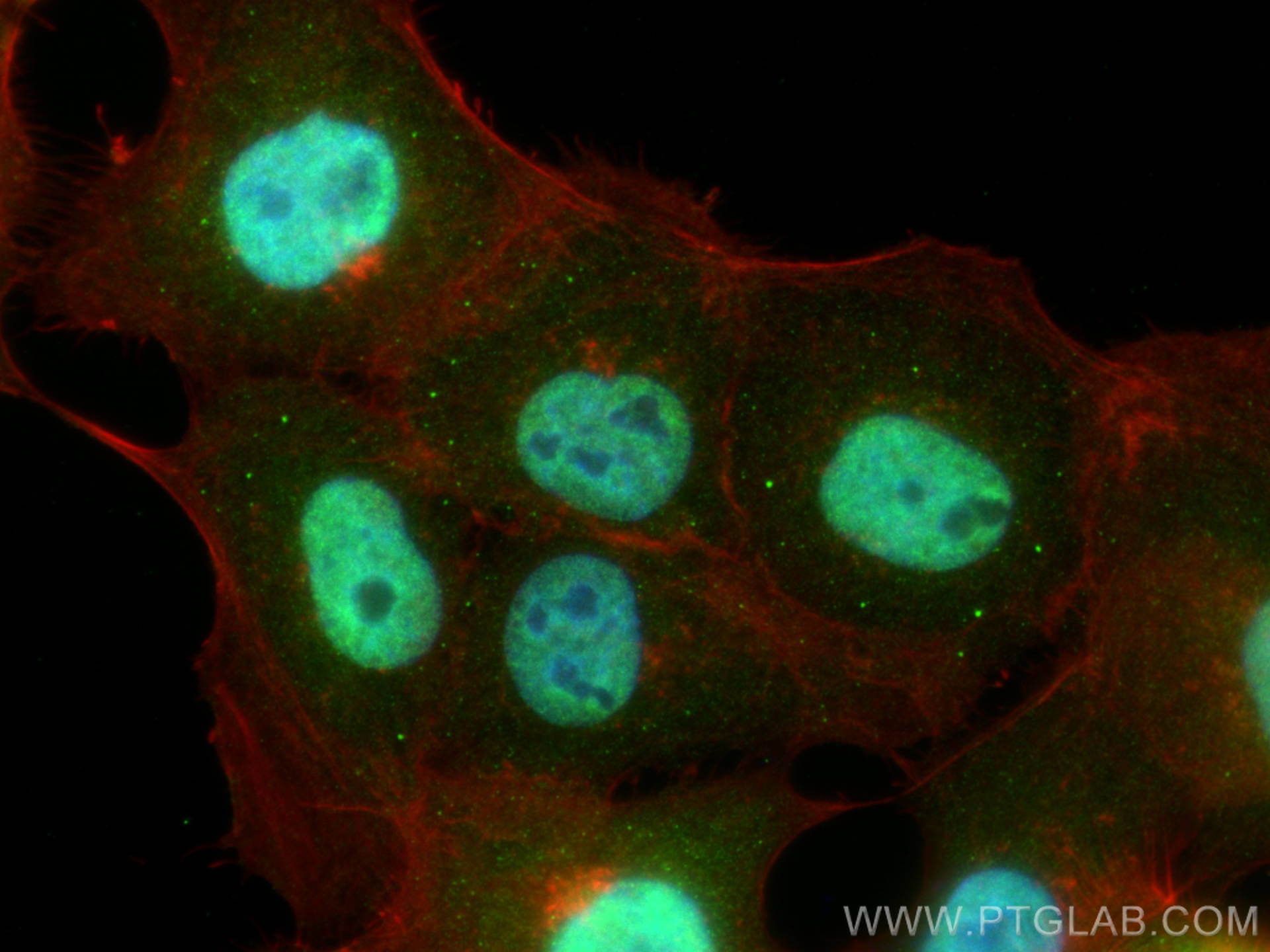Tested Applications
| Positive WB detected in | HEK-293 cells |
| Positive IF/ICC detected in | A431 cells |
Recommended dilution
| Application | Dilution |
|---|---|
| Western Blot (WB) | WB : 1:500-1:3000 |
| Immunofluorescence (IF)/ICC | IF/ICC : 1:200-1:800 |
| It is recommended that this reagent should be titrated in each testing system to obtain optimal results. | |
| Sample-dependent, Check data in validation data gallery. | |
Published Applications
| WB | See 1 publications below |
Product Information
21496-1-AP targets SLITRK5 in WB, IF/ICC, ELISA applications and shows reactivity with human, mouse samples.
| Tested Reactivity | human, mouse |
| Cited Reactivity | mouse |
| Host / Isotype | Rabbit / IgG |
| Class | Polyclonal |
| Type | Antibody |
| Immunogen |
CatNo: Ag15880 Product name: Recombinant human SLITRK5 protein Source: e coli.-derived, PGEX-4T Tag: GST Domain: 754-935 aa of BC098106 Sequence: HPLGHMCKNPIYRSREGNSVEDYKDLHELKVTYSSNHHLQQQQQPPPPPQQPQQQPPPQLQLQPGEEERRESHHLRSPAYSVSTIEPREDLLSPVQDADRFYRGILEPDKHCSTTPAGNSLPEYPKFPCSPAAYTFSPNYDLRRPHQYLHPGAGDSRLREPVLYSPPSAVFVEPNRNEYLEL Predict reactive species |
| Full Name | SLIT and NTRK-like family, member 5 |
| Calculated Molecular Weight | 958 aa, 107 kDa |
| Observed Molecular Weight | 100-110 kDa |
| GenBank Accession Number | BC098106 |
| Gene Symbol | SLITRK5 |
| Gene ID (NCBI) | 26050 |
| RRID | AB_3085658 |
| Conjugate | Unconjugated |
| Form | Liquid |
| Purification Method | Antigen affinity purification |
| UNIPROT ID | O94991 |
| Storage Buffer | PBS with 0.02% sodium azide and 50% glycerol, pH 7.3. |
| Storage Conditions | Store at -20°C. Stable for one year after shipment. Aliquoting is unnecessary for -20oC storage. 20ul sizes contain 0.1% BSA. |
Background Information
SLITRK5 (NTRK-like protein-5), a neuron-specific transmembrane protein, acts as a negative regulator of hedgehog signaling in osteoblasts. SLITRK5 is selectively expressed in osteoblasts and loss of SLITRK5 enhanced osteoblast differentiation in vitro and in vivo. It is a therapeutic target to enhance bone formation (PMID: 34326333). SLITRK5 deficiency impairs corticostriatal circuitry and leads to obsessive-compulsive-like behaviors in mice (PMID: 20418887).
Protocols
| Product Specific Protocols | |
|---|---|
| IF protocol for SLITRK5 antibody 21496-1-AP | Download protocol |
| WB protocol for SLITRK5 antibody 21496-1-AP | Download protocol |
| Standard Protocols | |
|---|---|
| Click here to view our Standard Protocols |






